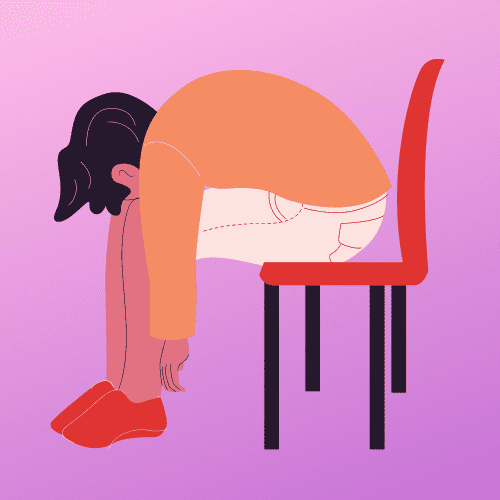

Sit up straight!
What is good posture? Does anybody have it?
Professional baseball players often have tilted hips (a degree of scoliosis) from repeatedly running in the same direction in a circle. However, most issues that cause back pain can’t be directly correlated to postural issues. Scoliosis, herniated discs, osteoporosis, pinched nerves, muscular spams, or dull aches affect a wide variety of individuals with varying posture types with no identifiable movement patterns in common. While it would be nice to identify one central cause of this discomfort like baseball players can, for most people the cause is more elusive. Posture.
We purchase standing or treadmill desks, sit on giant bouncy balls, and try to actively correct our slouches and “unaligned” stances. We malign a “sitting culture” hours on the computer, phones, or sitting in our cars. We buy support braces and there are apps connected to a device that buzzes when the wearer slouches. Yet, people doing manual labor or spending long hours on their feet experience back pain just as much or more so than their sedentary counterparts. We try to sit up tall when we remember, only to find ourselves slouching again a less than a minute later.
With all of that, we have little to go off to determine if posture really matters that much, or if slouching sometimes is a condition that goes with having a vertical spine. As we walk or sit through the day – having good posture means pushing back against gravity.
A Brief History of Posture Anxiety:
Recently a historian of science and sociologist published a book called, “Slouch: Posture Panic in Modern America”. Here she details the evolution of “Posture Panic” dating back to a statement of Darwin’s that humans began to evolve better cognitive development after they started standing upright. This somewhat innocuous idea quickly became loaded with classism. It was considered that those performing physical labor had better posture but were more animalistic while the upper class living sedentary lives were at risk of poor posture.
Since at least the 1600’s height and tall posture has been considered an important marker of “handsome” or “beautiful” which is why men lie about their height on dating apps. It also connotates confidence, strength, and business success. Through the early 20th century when eugenics gained popularity in America, posture correction became part of “race embitterment” studies and it was thought that good posture helped prevent tuberculosis. At this point, posture became a vague scapegoat for a myriad of health concerns. Even today, blaming posture for back pain puts the culpability back on the patient who has “been slouching”.
When a 1917 study found 80% of Harvard students were afflicted with poor posture, it became a public health campaign to amend America’s “posture crisis”. The study concluded that those with bad posture carried a higher risk of illness, although it doesn’t clarify which illnesses or how. It also put forth that two out of ten students’ feet would not be able to withstand military training. Considering they were only studying Harvard students, it could have been taken into account that the study’s test pool was not reflective of the general public, but that did not seem relevant at the time.
From the 1930’s through the late 1970’s Ivy League schools initiated freshmen by requiring posture assessment. In this study, students were photographed nude with metal pins affixed to parts of their spine. The study included many notables such as George W Bush. These “posture assessments” were part of a eugenics study to create a catalog of those that should be reproducing and to correlate their health to physical attributes as the students aged. Britain and Nazi German had run similar programs. Following a New York Times investigation in the 1990’s, many of the nude photos have been burned but some are still under lock and key.
Is Poor Posture a Bad Habit?
In short, no. Poor posture is a result of having a vertical spine that needs to support itself against gravity. Maintaining perfect posture for hours on end (whether sitting or standing) is nearly impossible. This is why no one seems able to “break the habit”. However, strengthening muscles around the core, hips, and shoulders supports the spine in its battle against gravity and can often help alleviate aches and pains.
Is Poor Posture Fake News?
Not entirely. Repeated movement patterns over time can shape bone structure, sometimes leading to aches and pains. In the research we do have, it seems that sitting or standing in the same position for long periods of time can lead to discomfort – whether that is sitting with good posture or bad. Small breaks and changing the way someone is sitting seems to matter more than sitting with “good posture” for extended periods of time.


